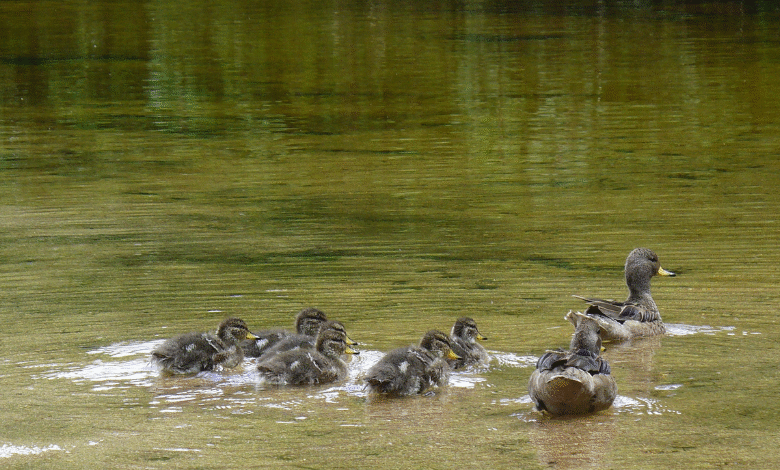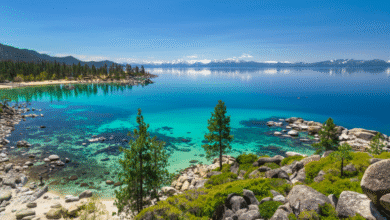https://pollo.info/criar-patitos

When I first decided to raise ducklings in my backyard, I had no idea what I was getting into. The fluffy little yellow balls of feathers looked adorable, but soon I realized there was a lot to learn: housing, heat, water, diet, health, and more. After a few trial-and-error weeks, I finally got things running smoothly and now raising ducklings has become one of my favourite small-farm hobbies.
If you’re reading this, you might be thinking about raising ducklings too. Maybe you want fresh eggs, maybe you have a small patch of land, or maybe you’re simply drawn to the fun of those waddling little birds. Whatever your reason, this guide will walk you through everything you need—from choosing the right breed to feeding them, keeping them healthy, and eventually moving them outdoors. I’ll speak plainly, share what I learned (sometimes the hard way), and keep the language simple so it’s easy to understand.
By the end of this guide you’ll know: why raising ducklings can be a good idea, how to start it right, what mistakes to avoid, and how to keep your ducklings healthy and happy. Let’s dive in.
Why Raise Ducklings?
Raising ducklings (and eventually ducks) has several advantages. One of the major benefits is that ducks can be more rugged and forgiving than chickens. According to a practical field guide, ducks are strong and often require less intensive care than chickens. They also produce larger eggs (depending on breed), and if you’re raising them for meat, you can get a bigger body weight in some breeds.
Here are some of the reasons you might choose ducks:
-
Eggs: Duck eggs are rich, larger, and if you like baking or cooking, they can be a treat.
-
Meat: Some people raise ducks for meat; certain breeds mature fast and yield good meat.
-
Pest control / free-ranging: Ducks enjoy foraging. They’ll eat insects, slugs, and other pests, which helps your garden.
-
Fun and hobby: They are entertaining—especially the young ducklings waddling around.
-
Lower cost / smaller scale: Compared to large scale poultry, raising a few ducks can be manageable even on a small property.
However, it’s not all easy. There are things you must plan for: housing, water access, heat for young ducklings, disease prevention, predator risk (if outdoors). So if you’re expecting no work, you’ll be disappointed. But if you’re willing to invest some time and care, raising ducklings can be very rewarding.
One difference I noticed when I moved from raising chickens to dabbling with ducks: ducks are more water-oriented. They need water to bathe and preen, and if they don’t have proper access, you’ll see messy or unhealthy plumage. Also their housing and brooder setup needs more thought because ducklings splash water and need larger water containers (but safe ones). It took me a week to adjust to that new behaviour.
Read Also: Great firewall china https traffic disruption
Choosing the Right Breed and Getting Started
If you’re just getting started, picking a breed that’s friendly, good for beginners, and suited to your region (climate, space, water access) is important.
Popular beginner breeds
-
Pekin: Very common, fast-growing, good meat breed, tolerant of many conditions.
-
Khaki Campbell: Excellent egg layer, very active, good for eggs.
-
Muscovy: Quiet, less noisy than some duck breeds, good if you have neighbours.
-
Mixed local breeds: often more adapted to your climate.
Before you buy ducklings or eggs, ask yourself:
-
Do I want them for eggs, meat, or both?
-
Do I have the space, water access, and housing?
-
Do I want to incubate eggs myself, or buy ducklings ready-to-go?
Incubation basics
If you want to hatch your own ducklings from eggs, you’ll need an incubator or good brooder environment, and you’ll need to monitor temperature and humidity. One guide mentions that for ducks, the incubator requirements may differ from chickens (for example, they may need a few extra days). While I didn’t personally incubate (I bought day-old ducklings), I learned from talking to friends who did:
-
Set the incubator to about 37.5°C (99.5-100°F) (check breed specifics).
-
Maintain humidity around 55-60% early on, and raise it to ~65% for the last few days.
-
The incubation period for many duck breeds is around 28 days (give or take).
-
Turn the eggs several times a day until the final few days.
If you’re new, buying day-old ducklings is simpler and faster. Make sure they come from a reputable supplier, are healthy, alert and active.
Setting Up the Brooder and Housing
Getting the housing right from day one is crucial. The brooder is where your ducklings start their life. If you skip details, you’ll likely face issues like chilling, smothering, or behavioural problems.
Brooder essentials
-
Use a box, tub or small pen that is safe from drafts but has good ventilation.
-
Cover the base with bedding (e.g., wood shavings, straw) that isn’t slippery (ducklings wobble). Avoid smooth plastic or newspaper if possible because slipping can injure legs.
-
Heat lamp or brooder lamp: for the first week you’ll need a high temperature (for example around 32-35°C / 90-95°F), then gradually reduce as they grow.
-
Provide a cooler zone: ducklings need to move away from heat if they feel too warm, so design the brooder so part of it is less hot.
-
Water and feed containers: shallow dishes for water, feeders low to the ground. The water dish should be shallow enough that ducklings can drink but not drown. One guide warns about water depth and supervision.
Transitioning to larger housing / outdoors
Once they’re a few weeks old, you’ll move them out. This might be a larger pen, a coop with an outdoor run, and eventually free-range or pond access (if you have it).
Important things:
-
Predator protection: ducks are vulnerable to foxes, dogs, birds of prey.
-
Clean drying area and access to water.
-
Flooring and bedding that stays dry (ducks produce wetter droppings).
-
If you have a pond or water feature: ensure the ducklings can safely enter and exit, supervise early swims.
From my personal experience: I set up a tub with a ramp for the ducklings to ease into the outdoor run. At first I kept them inside for about two weeks until they had enough feathers and strength. Then I moved them to a sheltered run and introduced water access gradually. The key lesson: don’t rush the move outdoors, especially if nights are still cool.
Feeding and Water for Ducklings
Feeding and water access are among the most important parts of raising healthy ducklings. Getting this wrong is probably the biggest cause of early losses or weak growth.
Feeding schedule
-
Day 1 to Week 1: Provide starter feed high in protein (about 18-20%) that is safe for ducklings. Some breeders recommend adding a bit of sugar in the water or a tiny amount of boiled egg yolk to provide immediate energy (for weak ducklings).
-
Weeks 2-4: Switch to grower feed (approx. 16-18% protein), begin introducing small greens (finely chopped), or safe scraps (in moderation).
-
Weeks 5 onward: If raising to adult stage, you might switch to adult duck feed or layer feed (if laying). For meat ducks, some switch to finishing feed or allow more foraging.
-
Always provide grit (small stones) if they are free-ranging, to help digestion.
Water
-
Ducklings love to splash, but water must be shallow enough to avoid drowning. One tip: use a shallow bowl or tray with pebbles at the bottom so they can drink but not submerge their heads fully.
-
Change the water daily, clean the container, remove droppings—dirty water is a big risk for illness.
-
As they grow older and go outdoors, give them access to a small shallow pond or kiddie pool. Supervise early swims: a tired duckling can drown.
In my own setup I made this mistake: I gave a deep water dish right away and one duckling fell in and got chilled. After that I switched to a shallow dish with a ramp and made sure they always had dry space to get out. I also learned that ducklings drink a lot and getting behind on water changes leads to poor growth, so I set a daily schedule.
Health, Hygiene and Safety
Keeping your ducklings healthy and safe is key. They are tougher than you might think, but only if you give them good conditions. If conditions are poor, disease, chilling, or parasitic infestations can quickly become major problems.
Common health issues
-
Chilling: Ducklings without enough heat or wet bedding can get chilled, which slows growth and can kill.
-
Dehydration or starvation: If feed or water isn’t accessible, ducklings decline fast.
-
Parasites: As they grow outdoors, external parasites (mites, lice) and internal parasites may appear.
-
Wet and muddy conditions: Ducks produce wetter droppings; if their run is muddy, ammonia and bacteria build up.
-
Salmonella and zoonotic risk: There’s documented risk of salmonella in people who handle backyard poultry (including ducks) without proper hygiene. The Centers for Disease Control and Prevention (CDC) found that contact with ducklings and other domestic poultry caused infections in many cases. AARP
Prevention and good hygiene
-
Clean brooder and run regularly: remove soiled bedding, droppings, rinse water containers.
-
Keep dry space available. Ensure their housing is well-ventilated but draft-free.
-
Wash hands after handling ducklings; supervise children especially.
-
If you let them swim, rinse and dry them afterward; avoid stagnant water.
-
Monitor signs of illness: lethargy, loss of appetite, weak legs, dirty vent area, unusual droppings.
-
Vaccination: Depends on your country and local vet advice; some ducks may need vaccinations or preventative treatments for parasites.
In my early weeks I watched closely: when one duckling became quiet and huddled under the lamp while the rest played, I separated it into a small warm pen, gave extra feed and water, and it recovered fully. That taught me: early observation prevents bigger problems.
When Can They Swim and Outdoor Life
One of the fun moments is when your ducklings graduate from the brooder to their first swim. But timing matters.
When are they ready?
Most ducklings need their feathers (down to flight/fat ones) to be sufficiently developed, and they need to be strong enough to safely get in/out of water. Some general guidelines:
-
At about 3-4 weeks old many ducklings can start supervised shallow water play.
-
Ensure they have a ramp or gradual access to water so they don’t struggle to climb out.
-
At that time the water should be shallow—just enough for them to wet themselves and preen, not deep enough to swim freely.
-
Only once they can keep themselves warm, dry off, and safely get out should they be given full pond access.
Outdoor transition
-
Wait for consistent warm weather if it’s a cold region.
-
Provide a secure outdoor run, dry bedding, and access to shade and water.
-
Introduce pond access gradually: first supervised, shallow, short times.
-
After they grow older (8-12 weeks depending on breed), you can give more freedom and deeper water.
In my backyard, I put a kiddie pool with a ramp at about week 4. For the first week I sat beside them watching—they would splash, flap, and then climb out. After week 6 I let them swim a little longer. I still gave them a dry corner and towel access. They loved it and it greatly improved their feather condition, preening, and activity levels.
Raising for Eggs or Meat
Depending on your goal, your setup and timeline will differ.
For eggs
-
Choose a good egg-laying breed (for example Khaki Campbell).
-
Provide nesting boxes, perches, clean water, balanced feed.
-
Ducks generally begin laying from about 20-30 weeks depending on breed.
-
Expect fewer eggs than hens sometimes, but duck eggs are larger and richer.
For meat
-
Choose fast-growing breeds (e.g., Pekin).
-
They may reach slaughter weight in about 8-12 weeks (depending on conditions) in commercial settings. Research indicates certain Pekins can be ready around 77 days in some contexts.
-
Provide more space, ensure feed supports growth, manage health closely.
Cost vs benefit
I did a cost tally one season: feed for the first 8 weeks, heat lamp, water, bedding, then outdoor run. The cost per duckling was moderate and the return (either in eggs or sale) was reasonable. If you keep them long term, overhead drops because housing is already built. If you’re planning commercial scale, obviously you need a business plan, local regulations, and marketing.
Common Mistakes and Troubleshooting
Here are common errors beginners make and how to avoid or fix them.
-
Over- or under-heating the brooder: If the heat lamp is too high or too low, ducklings either huddle too much or spread out too far. Watch their behaviour: if they crowd, they’re cold; if they avoid the heat, they’re too hot.
-
Using chicken feed only: Ducklings have different nutritional needs (especially regarding niacin). Using only chick starter feed long-term can cause weak legs or slow growth.
-
Giving too deep water too early: As noted earlier, deep water before they’re ready can lead to drowning or chilling.
-
Dirty/wet housing: Since ducks are wetter birds, their housing must handle moisture. If you let them free-range without dry spots, you’ll get disease or poor feathering.
-
Predator or escape risk: It’s easy to think “just a duckling run” but dogs, foxes, cats, and birds of prey will target them. Secure fencing, overhead cover, and good locks are required.
In my first batch I had one duckling limp its leg. I realised I had placed the brooder bedding on a smooth plastic tray and the duckling slipped repeatedly. I switched to wood shavings, ensured it had grip, and the duckling improved. That taught me: small details matter.
My Personal Experience & Final Tips
I’ll share a short story: My first attempt to raise ducklings started with six Pekin ducklings. I had space, but I underestimated how much water they’d create. Within two days the brooder corner was soggy. I immediately added more absorbent bedding and a small tray under the water dish to catch splashes. I also had to lower the heat lamp earlier than I expected because the ducklings were too active and panting.
Here are 10 quick tips I wish I’d known on Day 1:
-
Buy shallow water dishes with a lip so ducklings can’t climb in and splash too much.
-
Cover the run with shade for hot days—ducklings can overheat when basking.
-
Keep a thermometer in the brooder at duckling height to monitor conditions.
-
Introduce a ramp for the water tray so they can safely enter and exit.
-
Use bedding that isn’t slippery—ducklings wobble a lot.
-
Give them access to fresh greens daily once they’re about 2-3 weeks old—they love it and it helps digestion.
-
Always change water daily—even more often in hot weather.
-
Don’t rush outdoor access—wait until feathers are sufficiently developed.
-
Plan predator proofing in advance—don’t assume “just a little run” is enough.
-
Observe your ducklings daily—if one is off, act quickly (extra feed, separate warm area) rather than wait.
Conclusion
Raising ducklings can be one of the most rewarding small-scale farming or backyard poultry activities. They bring charm, productivity (eggs or meat), and fun. But like anything worth doing, they require proper planning: the right breed, good brooder and housing, correct feeding and water setup, health management, and safe outdoor access. My experience was full of lessons, but I found that the more I prepared, the smoother it went, the stronger and healthier my ducklings grew—and the more I enjoyed it.
If you follow the basic steps in this guide, stay observant, and treat your ducklings with good care, you’ll set yourself up for success. Remember: it’s not just about starting, it’s about ongoing care. And the better you treat them early on, the better your adult ducks (or eggs or meat) will be.
Let’s move next to some common questions.
FAQ
Q: How many days does it take for duck eggs to hatch?
A: It depends on the breed, but many duck breeds hatch in about 28 days when incubated properly. Always refer to breed-specific guidance.
Q: What feed should I use for ducklings?
A: Use a high-protein starter feed (18-20%) designed for ducklings—or if only chick starter is available, ensure you supplement with niacin or greens. After a few weeks, move to grower feed then adult feed depending on your goal.
Q: When can ducklings swim?
A: They can have shallow water access around 3-4 weeks when they’re feathered and strong. Full swimming in a pond should wait until they can safely get out and dry off.
Q: Can I raise ducklings without a pond?
A: Yes. While water for bathing is ideal, you can raise them in a run without a full pond, provided you give very shallow water for bathing and ensure clean dry space. They’ll still grow healthy.
Q: How many ducklings per square metre?
A: It depends on age. For brooder stage you might keep several in a small pen. For outdoor housing note that ducks produce wetter droppings and need dry space. A general guideline is 2-4 ducks per square metre indoors initially, and then more space as they grow.



